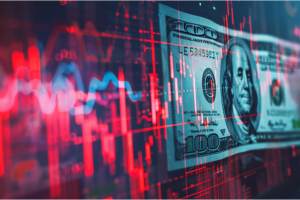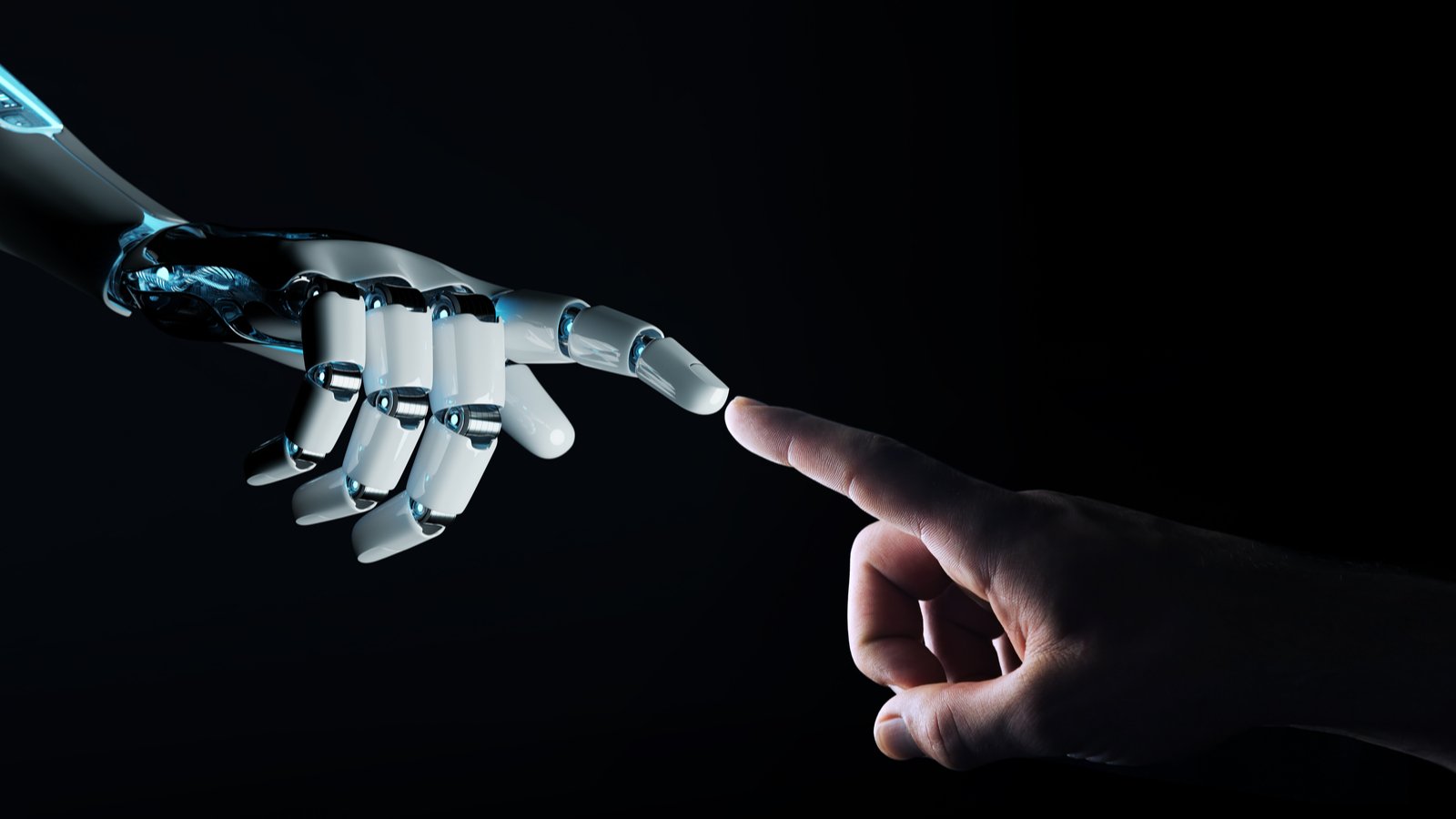
Investors seeking reliable AI-powered returns should consider robotics stocks. Many companies are leveraging artificial intelligence to create human-like robots. As discomforting as that truth may be to some, the economic potential therein is massive.
The numbers behind the opportunity are staggering. Between 2023 and 2030 the artificial intelligence robots market could grow at a compound annual rate of 21.5%. The rule of 72 suggests that an investor with average exposure to the AI robots sector could expect their investments to double in roughly three years.
Generally speaking, investors are aware that AI and robots, in particular, represent excellent investment opportunities. However, they might not be well aware of the companies and stocks best positioned currently. Let’s take a look at seven such robotics stocks to buy.
Thermo Fisher Scientific (TMO)

Thermo Fisher Scientific (NYSE:TMO) designs and manufactures robots for the automation of research tasks primarily in laboratory settings. The company has been identifying ways to adapt artificial intelligence within its robots for years.
Its recent collaboration with Multiply Labs is a good example. The company produces advanced cell therapy instruments. TMO lent its AI expertise to the company, resulting in more fully automated cell therapy manufacturing.
The benefits of the collaboration are clear and apply broadly to the application of AI to robotics. Those benefits include enhanced throughput and reduced labor costs. While the application of AI is currently focused on data centers and computing, it is clear the robotics opportunity is also massive.
TMO is also a particularly stable stock, which holds appeal now for its defensive nature. The shares benefit from a beta of 0.80. That implies they may hold up better in any upcoming downturn.
Tesla (TSLA)
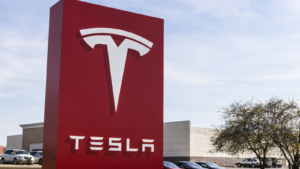
Tesla (NASDAQ:TSLA) stock has had a very difficult year, which looks to have changed course in the last two weeks. A lot of the turnaround has to do with improving conditions in China and the news that the firm will launch a cheap EV model in 2025.
Those are clearly the most potent catalysts any investor should consider when investing in Tesla. The company is first and foremost an electric vehicle (EV) manufacturer. However, beyond that, Tesla is notable in that it is developing AI robots.
Tesla continues to develop its humanoid Optimus robots. Although the project receives relatively less coverage, given Tesla is an EV company, it remains impressive. Elon Musk recently went on record stating the company could begin selling its Optimus robots as early as the end of next year. Musk believes the robots could perform warehouse tasks by the end of this year. Meanwhile, firms, including BMW (OTCMKTS:BMWYY), plan to use humanoid robots in their manufacturing operations soon.
Intuitive Surgical (ISRG)

Intuitive Surgical (NASDAQ:ISRG) will continue to be one of the best AI robotics stocks for investors to consider. The company is best known for its da Vinci Surgical System. That system is a major driver of growth and one that applies artificial intelligence.
Intuitive Surgical is a strong investment precisely because of the da Vinci Surgical System. On a worldwide basis, procedural volume increased by 16% during the first quarter. As of March 31, there are 8,887 da Vinci systems installed globally. That represents a 14% increase from the first quarter of 2023.
Revenue increased by 11% during that timeframe, with earnings rising by 51%. Intuitive Surgical had 15 patents related to artificial intelligence during the 4th quarter of 2023. Those cover a variety of applications, but generally, all leverage machine learning to improve surgery at the point of delivery.
Intuitive Surgical is the best robotic surgery stock for investors overall.
Teradyne (TER)
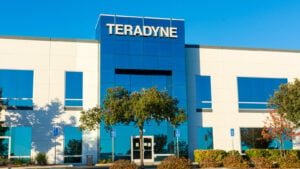
Teradyne (NASDAQ:TER) is a diversified firm operating in both the semiconductor and robotics industries. The company sells chip-testing products. While Teradyne is primarily a semiconductor firm, it is also notable for its efforts in robotics and artificial intelligence.
Evidence of that assertion can be found in the recent news that the company will collaborate with Nvidia (NASDAQ:NVDA) to bring AI capabilities to the automation process. Teradyne’s robotics business includes several robotics firms under its corporate umbrella.
For one, Universal Robots demonstrated an autonomous inspection solution at Nvidia’s GPU Technology Conference, better known as Nvidia GTC.
Teradyne’s robotics arm accounted for $88 million of the firm’s $600 million in sales during the first quarter. As mentioned above, Teradyne is primarily a semiconductor testing firm. That segment accounted for $412 million in revenues during the period. Overall, it was a strong quarter for Teradyne, with results besting expectations, driven by artificial intelligence applications.
Rockwell Automation (ROK)

Rockwell Automation (NYSE:ROK) is the world’s largest pure-play industrial automation and digital transformation firm, according to its website. It should be no surprise that its stock is one of the better-known ways to invest in the combination of robotics and AI.
In my mind, there are two primary reasons why investors should pay particular attention to Rockwell Automation. One is that Rockwell Automation is heavily leveraged in North America. In fact, 58% of the company’s revenues are attributable to the North American market. That’s particularly important because the North American region has dominated artificial intelligence early on. Second, Intelligent Devices accounted for $4.1 billion of the firm’s $9.1 billion in revenues in its 2023 fiscal year.
Rockwell Automation is looking to further the application of AI within its business. It recently decided to increase the scale and scope of AI by collaborating with Nvidia to accelerate next-generation industrial architecture. ROK stock is one of the first places to go for investors who believe the application of AI to robots is the future.
Deere & Company (DE)
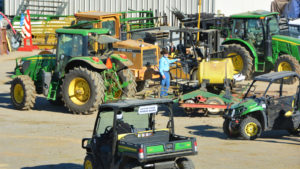
Deere & Company (NYSE:DE) is a firm and stock that has been heavily invested in AI autonomy for several years. It was back in 2022 that the company announced its autonomous 8R tractor. By that point, roughly 50 such autonomous tractors comprised its global fleet.
By early 2024 Deere & Company’s autonomous tractors were operating across farms in seven states within the U.S. The company has a goal stating every piece of equipment that touches corn or soy is to be fully autonomous within the next six years.
Deere is heavily leveraging computer vision and machine learning, with the goal of fully automated farming by 2030. It is also using AI to reduce the amount of herbicide needed to keep crops healthy.
The company insists its efforts to leverage AI are not done, with the goal of reducing the agricultural labor force. Instead, Deere & Company hopes to allow farmers to opportunity to do more at once by leveraging automation and AI. It will certainly be necessary as the world’s growing population will demand greater and greater agricultural output in the coming decades.
Nvidia (NVDA)
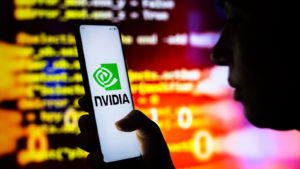
Nvidia is best known for its GPU chips and, more recently, its application to all things AI, data centers and machine learning. Those chips have proven to be the most capable for those applications. That dominance also extends to the robotics realm, where Nvidia is also making significant strides.
Back in mid-March, Nvidia announced its project Groot Foundational Model for Humanoid Robots. That announcement also included updates to the company’s Isaac robotics platform.
Meanwhile, Nvidia also unveiled a new computer named Jetson Thor to be leveraged for developing humanoid robots. It’s clear that Nvidia is much more than an AI chip maker dedicated to cloud computing and data center applications. The company is clearly putting substantial resources into the robotics opportunity and deserves investor attention for that fact as well.
Nvidia is so much more than that. Investors who care to dig deeper will find that Nvidia’s AI prowess is incredibly deep and wide.
On the date of publication, Alex Sirois did not hold (either directly or indirectly) any positions in the securities mentioned in this article. The opinions expressed in this article are those of the writer, subject to the InvestorPlace.com Publishing Guidelines.



